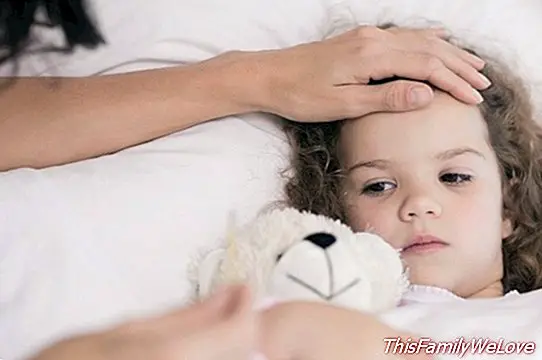Febrile infantile convulsions: how to know if it is dangerous

The most frequent convulsive disorder in childhood is that manifested as febrile infantile convulsions. Appear in the course of processes with fever, very numerous during the first years of life. Within febrile seizures, three types should be distinguished: typical or simple febrile seizures, atypical and concomitant.
When the conditions of a typical febrile seizure Or simple the forecast is excellent. The child may, perhaps, present another similar crisis in a febrile process during the months or years to come, although it is likely that it will never happen again. But there is no risk of brain injury and the child will continue his physical and mental development with absolute normality. In these cases it is not necessary to take any medication and should only be avoided in the future that has sharp rises in temperature.
How to know that the febrile convulsion is benign?
In order to be framed as typical or simple, a seizure must meet all these characteristics:
1. Appear in children over six months and under five years.
2. Happen in the course of a feverish process that does not directly affect the central nervous system. The most common are respiratory infections -faringitis, tonsillitis, catarrh, influenza- and gastrointestinal infections.
3. That no more than twelve hours have elapsed since the beginning of the fever. They usually appear with the first "rise" and even before the presence of fever has been noticed by the parents.
4. That there is no history of brain injury of any kind, both congenital and acquired after birth.
5. There will be no family history of seizures except, perhaps, the convulsions also febrile in some member of the family because this disease usually recognizes a certain hereditary predisposition.
6. The seizure should last less than fifteen minutes. Typically, they last between one and five minutes, more than enough time for parents to feel like an eternity.
7. The movements will be generalized and symmetric shakes on both sides of the body. They can be accompanied, as already mentioned, of loss of consciousness and involuntary emission of urine and feces.
8. When the crisis subsides, alone or with medical intervention, the child is absolutely normal, perhaps a little obtunded but without any difficulty in the movement of all muscles.
9. After a week after the crisis, An electroencephalogram performed on the patient should be normal, showing no signs of brain damage or presence of any epileptic focus.
Atypical seizures
It is called atypical febrile seizure the one in whose development is missing any of the nine points indicated for the typical ones, or several of them. Here the prognosis must be reserved because the chances of recurrence of the crises are quite high and also this type of crisis appears in some children who later will be epileptic being the first manifestation of this disease and more serious.
These children should receive some type of treatment although there is no unanimous agreement about the characteristics of the treatment. For some doctors it is preferable to keep the patient on continuous medication during the years in which the appearance of new crises is foreseeable; for others, medication would only be necessary during febrile periods or in the processes in which the onset of fever can be expected.
Children who have had one or more atypical febrile seizures should be checked periodically by the pediatrician or the pediatric neurologist in order to establish, by regular clinical and electroencephalographic examination, the presence of an epileptic sign.
Their psychic development is usually normal and it is necessary to ensure that the prescribed medication does not affect their ability to attend, which is fundamental for learning at that age.
What seizures are dangerous?
The Febrile concomitant convulsions are those that make their appearance in the course of febrile infectious processes that directly affect the central nervous system -meningitis, encephalitis-. Therefore, they have a greater severity derived from this brain affectation and they have little in common with the real febrile crisis. They will be treated in another article along with the diseases that originate them.
José Ignacio de Arana. Doctor of medicine and surgery. Specialist in Pediatrics and Childcare




